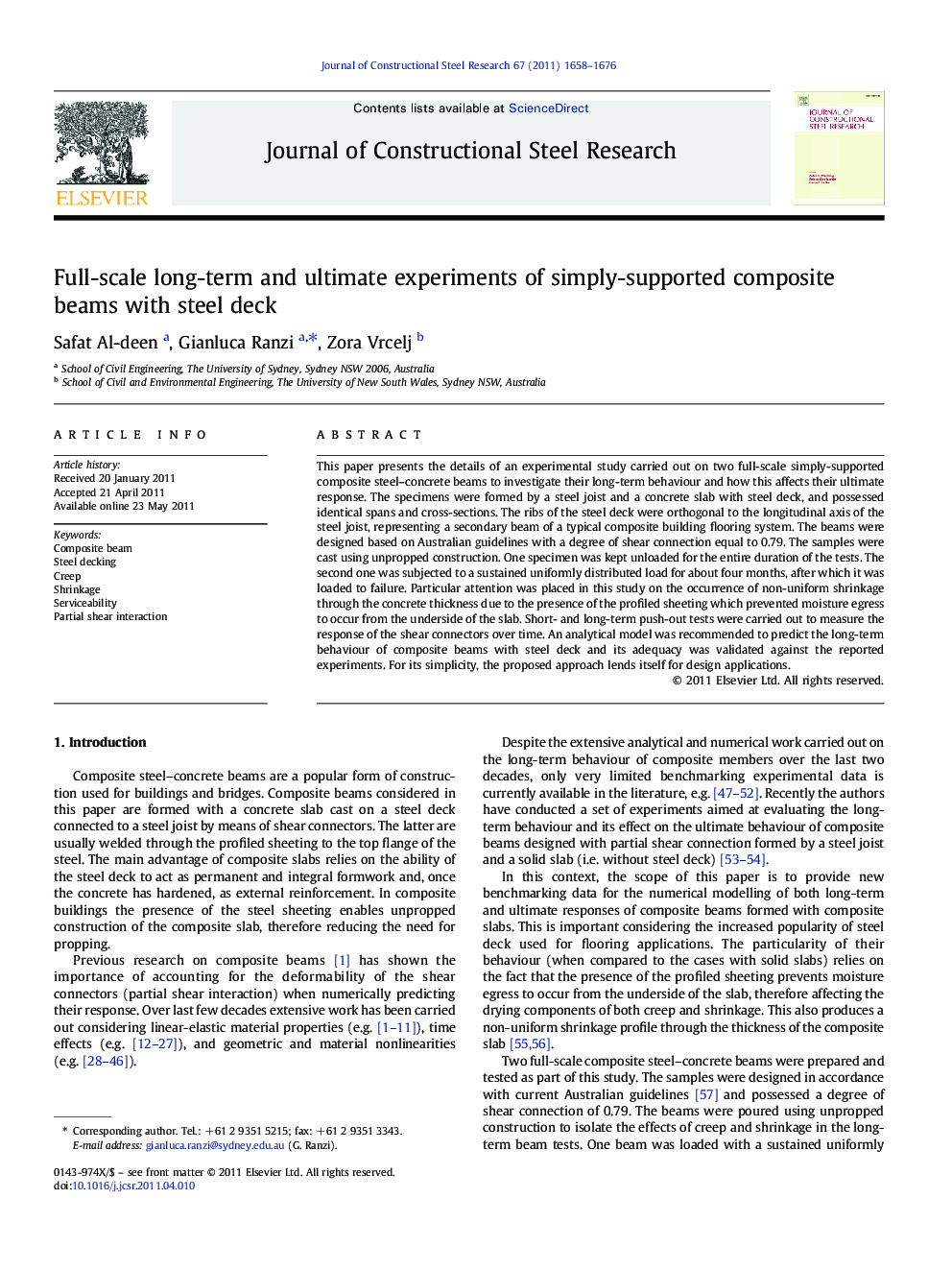| Article ID | Journal | Published Year | Pages | File Type |
|---|---|---|---|---|
| 285476 | Journal of Constructional Steel Research | 2011 | 19 Pages |
This paper presents the details of an experimental study carried out on two full-scale simply-supported composite steel–concrete beams to investigate their long-term behaviour and how this affects their ultimate response. The specimens were formed by a steel joist and a concrete slab with steel deck, and possessed identical spans and cross-sections. The ribs of the steel deck were orthogonal to the longitudinal axis of the steel joist, representing a secondary beam of a typical composite building flooring system. The beams were designed based on Australian guidelines with a degree of shear connection equal to 0.79. The samples were cast using unpropped construction. One specimen was kept unloaded for the entire duration of the tests. The second one was subjected to a sustained uniformly distributed load for about four months, after which it was loaded to failure. Particular attention was placed in this study on the occurrence of non-uniform shrinkage through the concrete thickness due to the presence of the profiled sheeting which prevented moisture egress to occur from the underside of the slab. Short- and long-term push-out tests were carried out to measure the response of the shear connectors over time. An analytical model was recommended to predict the long-term behaviour of composite beams with steel deck and its adequacy was validated against the reported experiments. For its simplicity, the proposed approach lends itself for design applications.
Research highlights► Long-term experiments of simply-supported beams with steel deck. ► Time-dependent response of the shear connection. ► Non-uniform shrinkage profile for composite slabs.
